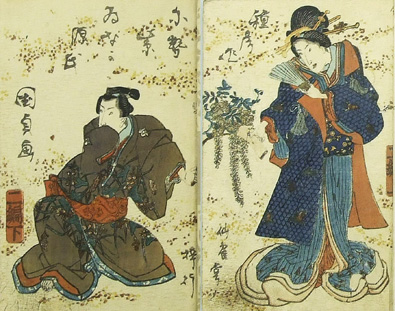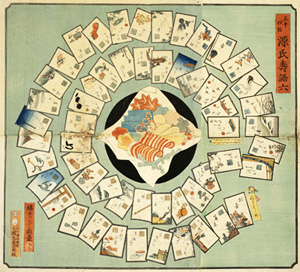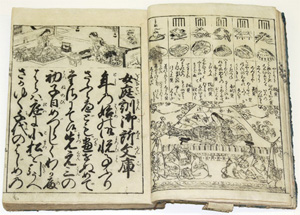Great-Edo Culture
Edo learning / Jihon and EzōshiRevival of Classical Literature in the Edo Period
The Bunka era (1804-1818) saw the rise of a particular style of literature called gōkan (compendia) that was popular in Edo. Gōkan was a longer type of kusazōshi (wood-block printed literature) that inherited the narrative and book-binding of kibyōshi. One of the masterpieces of this genre is Nisemurasaki-inakagenji ("The False Murasaki and the Rustic Genji") by Ryutei Tanehiko, which was loosely based upon the original "Tale of Genji." In differing from the original however, the later work was set in the Muromachi period of Japanese history. Furthermore, it is believed that the book touched upon actual contemporary intrigues occurring within the ladies' quarter (ōoku) of Edo Castle. Thus, the story proved popular among the women of Edo.
Written by Ryutei Tanehiko and painted by Utagawa Kunisada
1829-1842 (Bunsei 12 to Tempō 13)
However, did readers know "The Tale of Genji" upon which this later parody was based? Indeed, it was in the Edo period that literary classics became popular to Edo residents. Examples include "The Tale of Genji" and "Essays in Idleness" (Tzurezuregusa), which was written by Yoshida Kenkō during the Kamakura period. The publications of commentaries in addition to such original works also deepened public understanding.
* To view more explanation, please click the each image.




